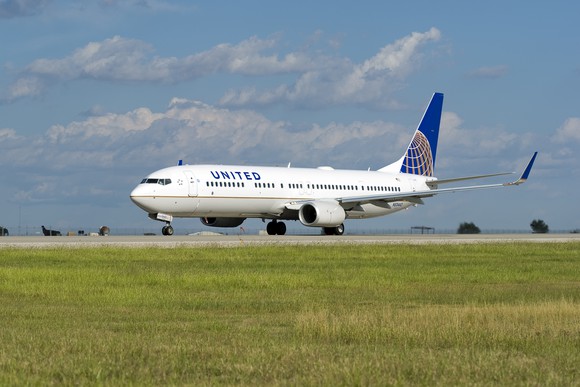In the past year, United Continental (UAL +1.01%) CEO Oscar Munoz has made big changes to his executive team. Most notably, he poached Scott Kirby from key rival American Airlines (AAL +1.09%) to fill the No. 2 job at United. He also hired Allegiant Travel veteran Andrew Levy as the new permanent CFO. More recently, Kirby brought his colleague Andrew Nocella over from American Airlines to serve as chief revenue officer.
Under this new management group, United has drastically changed its network strategy. The ultimate goal is to catch up with industry leader Delta Air Lines (DAL +1.30%) in terms of margin performance. Yet United's recent moves don't add up to a coherent plan.
More routes in the biggest hubs
One aspect of United's new route strategy is that it is aggressively adding new routes and increasing service on existing routes at some of its biggest hubs. From its San Francisco hub, the carrier is either launching new service or increasing capacity in more than two dozen markets this summer.
Meanwhile, United Airlines will add service from Chicago to six small cities this summer. Several of these cities currently have no United service whatsoever.

United Airlines is growing significantly in two of its top hubs. Image source: United Airlines.
All of these moves are part of a broader plan to improve connectivity across United's route network. Offering the most convenient connecting opportunities is critical for capturing highly profitable traffic to and from small cities, according to company president Scott Kirby.
Nevertheless, United Continental's network growth stands in sharp contrast to its previous commitment to capacity discipline. United's management has indicated that it just wants to get its fair share of domestic traffic -- but there's no reason to believe that American Airlines and Delta Air Lines will surrender their "unfair" share of the market without a fight.
Standing pat in D.C. -- and growing in Los Angeles?
It's not clear whether United Continental's growth in cities like Chicago and San Francisco will pay off. United is increasing capacity faster than GDP growth, which could put pressure on unit revenue. Moreover, there is a real risk that these moves will ignite market share battles -- further undermining unit revenue and profitability -- as analysts at Imperial Capital recently noted.
However, at least there is a plausible strategy behind United's decision to add capacity in these markets. The same can't be said for United's recent moves in Washington, D.C., and Los Angeles. If maximizing connectivity is the key to success, then axing these undersized hubs should be a no-brainer.
Instead, United doubled down on its commitment to Washington, D.C., last fall, extending its lease at Dulles Airport through 2024. It did so despite facing a clear structural disadvantage relative to American Airlines' hub at Reagan Airport, as the latter is 25 miles closer to the city center.
In Los Angeles, United Continental seems determined to grow. Kirby has said several times that United wants to get more gates there. Just last week, the company signed a $70 million deal for naming rights to the Los Angeles Memorial Coliseum, highlighting its seriousness about regaining lost ground in L.A.
Each of the top six U.S. airlines considers Los Angeles a hub or focus city, which means that United will face vicious competition there. The airport is also far too congested for any airline to offer good connectivity, especially compared to United's nearby San Francisco hub. Lastly, American and Delta are highly dependent on Los Angeles from a strategic perspective and will react accordingly if United tries to grow there.
Is there a real plan?
One of the main reasons why the airline industry has historically been so unprofitable is the tendency of airline executives to engage in empire building rather than profit maximization. It's reasonable to wonder whether United's new management team is succumbing to this age-old pitfall.
Building up United's schedule at its biggest hubs to maximize connecting opportunities runs the risk of competitive pushback, but at least it's a plausible strategy. By contrast, hanging on -- or even growing -- in Washington, D.C., and Los Angeles doesn't make sense, unless the goal is growth for growth's sake.
Investors appear to be very confident in United Continental's growth strategy, having sent the stock to a new all-time high this week. They may find themselves bitterly disappointed in a few years.
